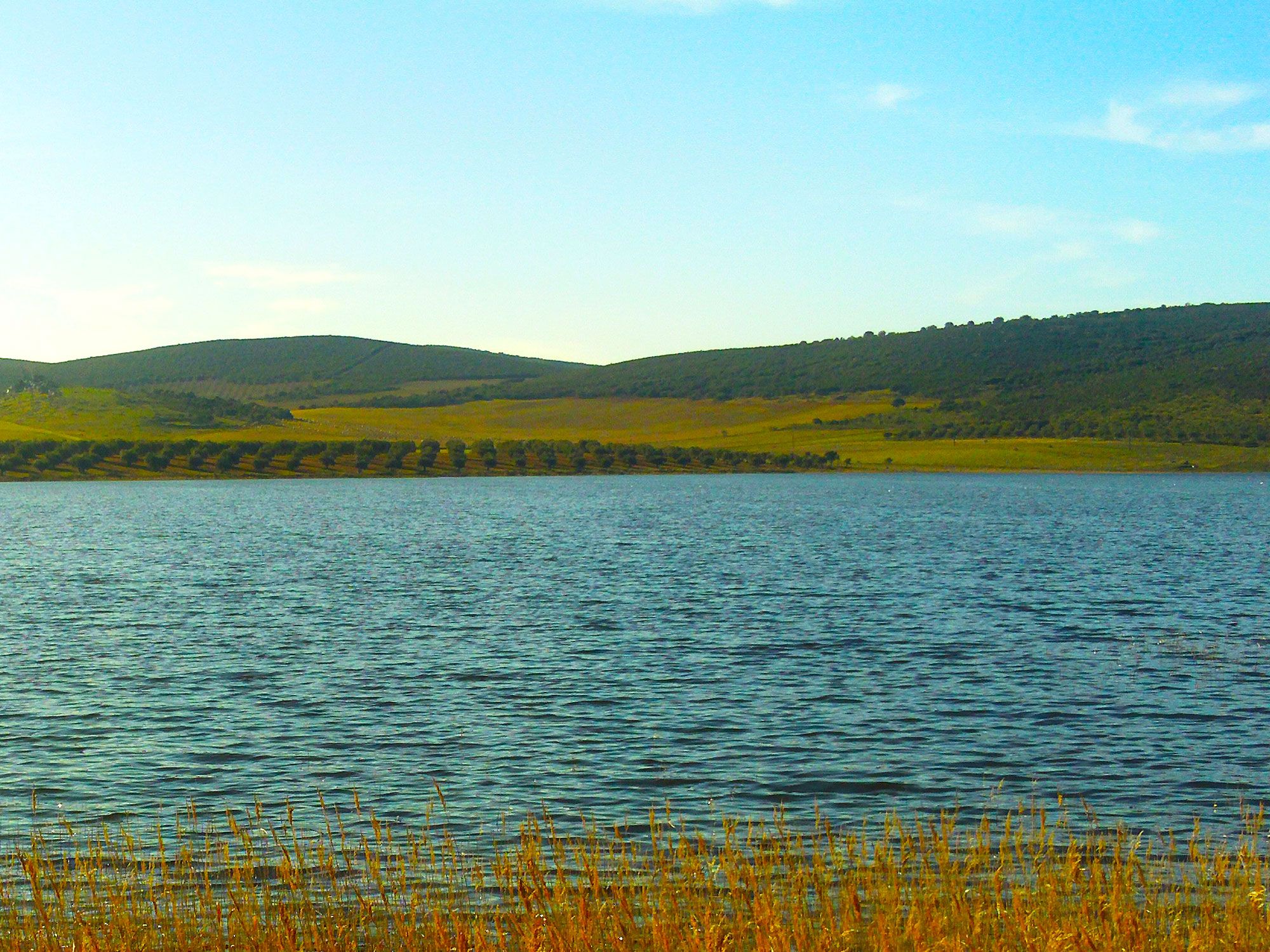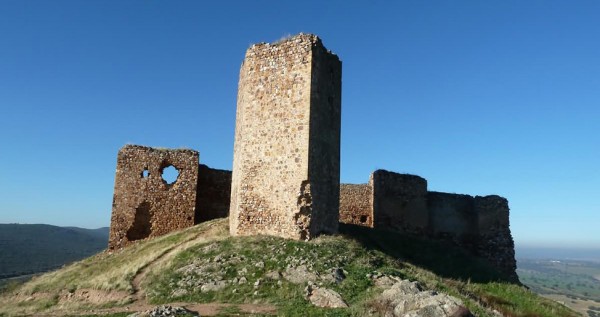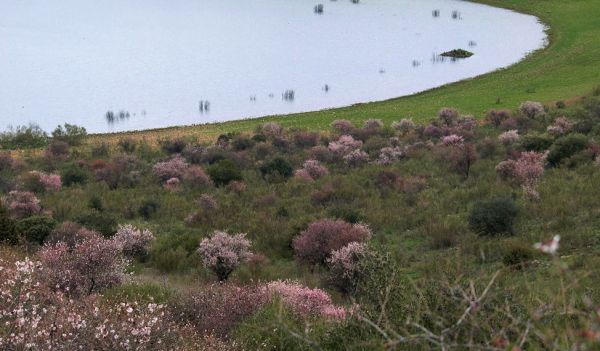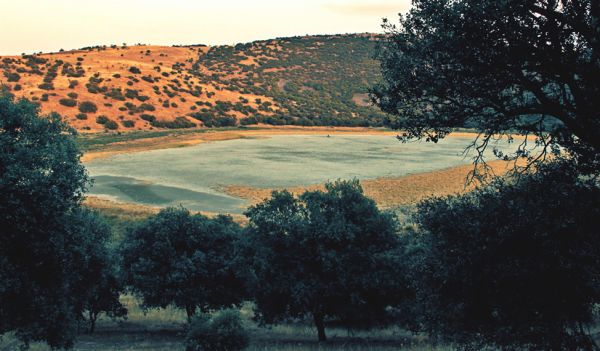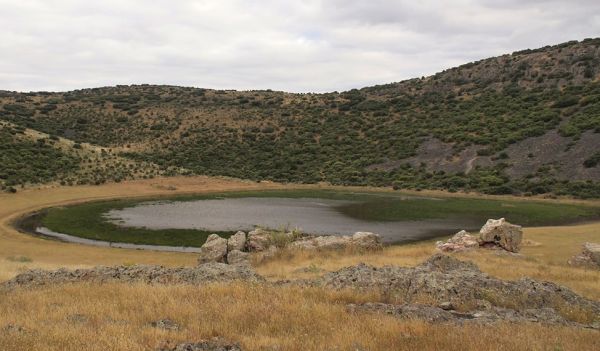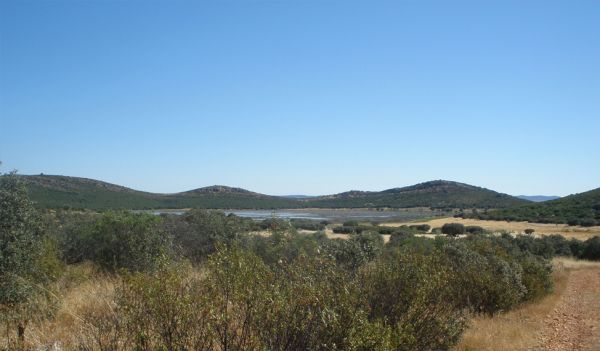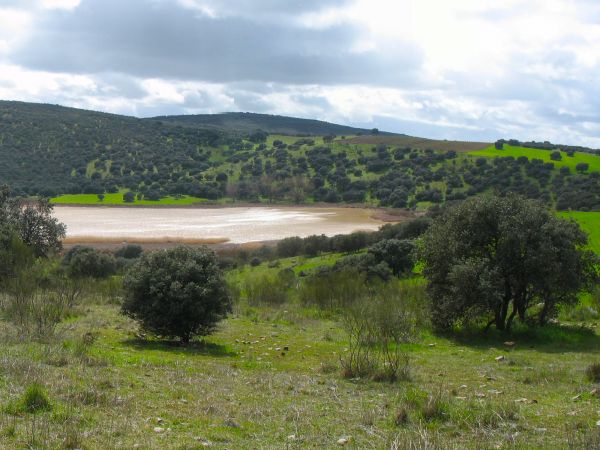The volcanic lakes of Campo de Calatrava
Ciudad Real
The Campo de Calatrava stores many a surprise for nature lovers. An acute sensitivity is required to admire such virgin landscapes: vast steppe lands and plains blended with Mediterranean mountains and lowlands, and appearing like an oasis in the desert, some of central Spain’s finest wetlands, which for many years were bursting with animal life.
However, the main differentiating factor for this scenery, which sets it apart from traditional La Mancha, is the volcanic origin: over 500 volcanic traces dating back to between 8 and 1 million years ago, although some of their displays took place in very recent - geologically speaking - times.
This extensive activity has left an exceptional footprint: in rainy seasons, the depressions or craters from these volcanoes gave rise to small interior lagoons with extreme beauty, and exclusive flora and fauna, adapted to the specific nature of the zone.
Known as basins or ‘maars’, we recommend a trip through some of the most representative. In environmental terms, we are in exceptional places - Western Europe’s only volcano lakes.
Abenójar is home to the Michos Volcanic Crater Lake Natural Monument, in a circular, 550-metre crater at the foot of the Abenójar mountains, creating an extremely beautiful complex. We’ll find wildlife of extreme sensitivity, such as the Iberian lynx, the Spanish imperial eagle, the black stork and the black vulture.
Corral de Calatrava is home to the Caracuel Lagoon Nature Reserve, a highly seasonal wetland located next to the Perabad mountains. This is the main lake in a lagoon complex also featuring the Doña Elvira spring-lagoon, the Perabad lagoon, the Dehesa and Estación lakes and other smaller ones. The beautiful image of the Caracuel castle can be seen from the lagoon. There is a bird observatory to the south of the lagoon.
Our next stop is an extremely beautiful space between the towns of Alcolea de Calatrava and Corral de Calatrava: the Peñarroya Volcano and Lagoon Natural Monument, a noteworthy volcano due to its magnificent 60-metre high cone –one of the best examples of Strombolian-style edification– and the lagoon formed when the lava invaded the Lobo stream. The surrounding vegetation includes holm oaks, junipers, Kermes oaks, broom shrubs, and bushes and bulrushes in the wetlands; the odd Iberian lynx and numerous birds use the area to nest or hibernate.
The Hoya de Cervera Lagoon, in the municipal district of Almagro, is noteworthy due to its maar-type hydromagnetic eruption crater, 1-km in diameter and 140 m deep. The lagoon is framed by the Arzollar mountains, with sweeping junipers, broom shrubs and holm oaks, just one option of many here in the heart of nature that we can explore. While doing so, if we look up, we might catch a glimpse of golden eagles and in summer, we’ll see marsh harriers nesting.
Currently, access is only via the slopes of the hill encompassing the lagoon, as it’s on private land.
Close to Ciudad Real, in the hamlet of Valverde (10 km away), there is an extremely interesting natural space. We’re talking about the De La Posadilla Lagoon Natural Monument. To get an idea of the violent eruption that created the lagoon - when the magma came into contact with the underground water -, you have to visit Posadilla. The crater formed has a diameter of 500 m and a depth, in some areas, of up to 100 metres. Surrounded by the Fuentillejo volcano, the scenery is jaw dropping. The area is home to holm, Cornicabra and kermes oaks, and mastics; white and black storks, the Spanish imperial eagle, short-toed snake eagles, golden eagles and black vultures.
May also be of interest to you
Castilla-La Mancha Tourism in 2023. All rights reserved.
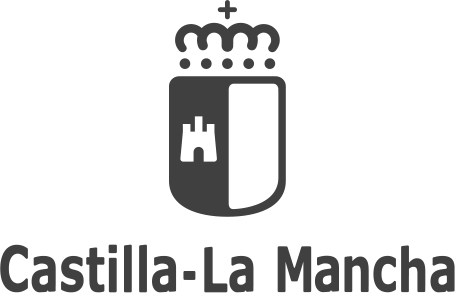
 365
365
